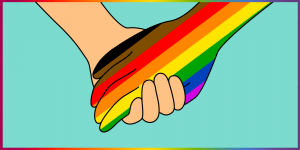 In academic writing for research, the phrase “collaboration” is commonly understood to refer to an equal cooperation between two or more members of one or more academic institutions who are pursuing mutually fascinating and helpful research. Collaborative research is carried out by bringing together a large number of people from various departments. Different scientists and practitioners from agencies, universities, non-profit organisations, and businesses work together to frame the issue so that management or policy decisions directly benefit from the findings through collaborative research.
In academic writing for research, the phrase “collaboration” is commonly understood to refer to an equal cooperation between two or more members of one or more academic institutions who are pursuing mutually fascinating and helpful research. Collaborative research is carried out by bringing together a large number of people from various departments. Different scientists and practitioners from agencies, universities, non-profit organisations, and businesses work together to frame the issue so that management or policy decisions directly benefit from the findings through collaborative research.
A well specified policy or managerial need characterises collaborative research. It is a collaborative approach that provides systematic and expressive chances for user feedback, as well as a project structure in which practitioners and scientists collaborate to impact project scope and design, as well as generate research results and outputs.
People engage in collaborative research for a variety of reasons when working on a topic. Many funding agencies favour interdisciplinary research teams that may pool their resources and, as a result, have a larger scope. One of the most significant advantages of collaborative research is that no one person bears the entire load because it is based on the equal division of labour model. There are also numerous opportunities for team members to learn from various departments while working on the project. Collaborative research ensures that scientists, politicians, and managers’ strengths and perspectives are utilised, and that different teams collaborate to address relevant and important challenges. Doing research with practitioners instead of doing it for them yields better benefits for everyone involved.
There are majorly five different types of collaborative research:
- Within academic institutions– here members from different departments in the same institution come together to work on a project. Since it is done among the departments of the same institution no external funding is involved and the division of labour is also equal among the different groups.
- Between academic institutions– here members from different departments from different institutions come together to work on a project.
- Academic institutions and a government agency/department– in this type of research an academic institution works with a government agency to address an issues. For this research, the funding comes for the government agency.
- Academic institutions and industry– in this type of research a researcher from a private company works with the research group of an academic institution. During this time the non-academic researcher pursues his own project while at the same time learning about the current techniques and research questions from the members in the group.
- Domestic and International– two or more institutions are involved in this type of research collaboration for different countries to work together on a project.
While collaborative research is one of the most fruitful types of study, it can also raise a variety of ethical concerns, owing to the enormous number of people, institutions, and resources involved. It raises a slew of ethical concerns about authorship. Different domains have different agreements about the type of contribution that must be made to a project before researchers can have their names listed in a publication. Before being registered as an author, each member of the research team must provide a “substantial intellectual contribution” or a “major scientific contribution” to the project.




